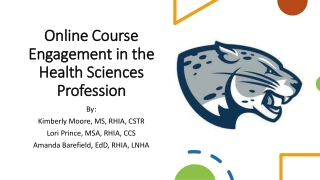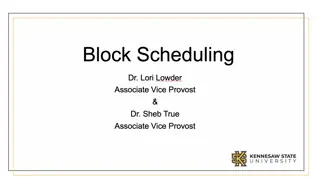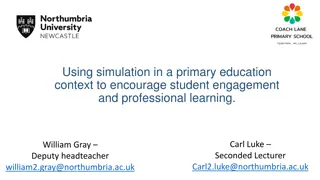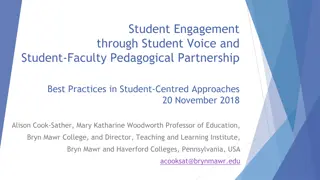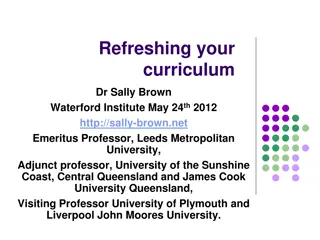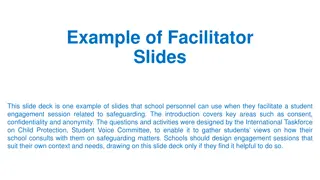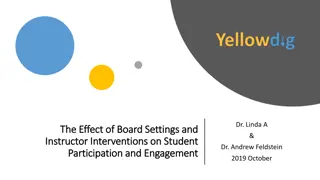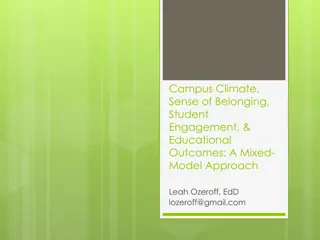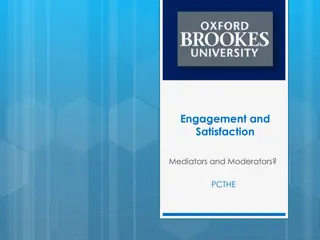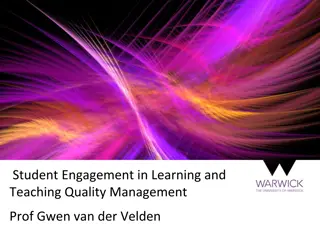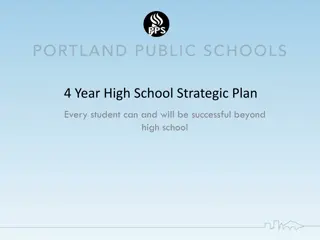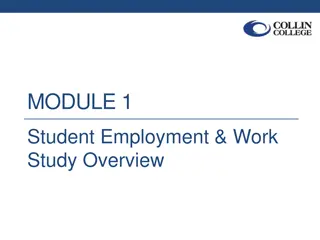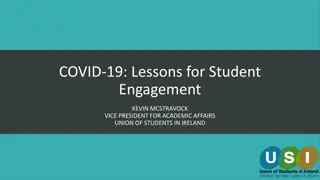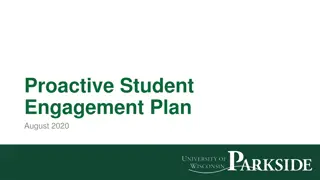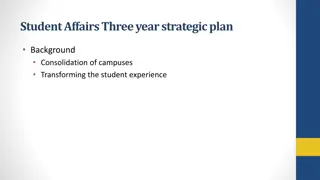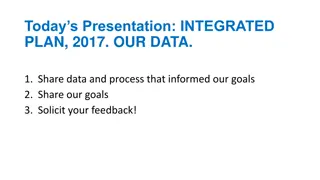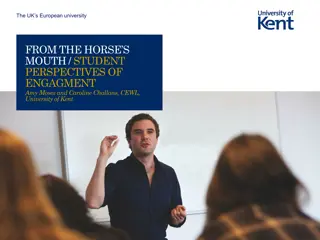Enhancing Non-Traditional Student Engagement
Strategies for instructors to support non-traditional students, understanding their unique characteristics and needs for better engagement and success on campus. Examining age as a factor in identifying non-traditional students and exploring methods to assess effectiveness of support initiatives.
Download Presentation

Please find below an Image/Link to download the presentation.
The content on the website is provided AS IS for your information and personal use only. It may not be sold, licensed, or shared on other websites without obtaining consent from the author.If you encounter any issues during the download, it is possible that the publisher has removed the file from their server.
You are allowed to download the files provided on this website for personal or commercial use, subject to the condition that they are used lawfully. All files are the property of their respective owners.
The content on the website is provided AS IS for your information and personal use only. It may not be sold, licensed, or shared on other websites without obtaining consent from the author.
E N D
Presentation Transcript
NON-TRADITIONAL STUDENT ENGAGEMENT: WHAT CAN INSTRUCTORS DO? UC-BERKELEY CENTER FOR TEACHING AND LEARNING WAVES OF INNOVATION: MAY 5, 2016 Wendy Muse Sinek, Ph.D. Lecturer, Political Science University of California, Berkeley
WHATS THE PROBLEM? By 2018, 66% of all jobs will require some form of post-high school training Carnevale, Smith, and Strohl 2010 Kelly and Strawn 2011
WHATS THE PROBLEM? By 2018, 66% of all jobs will require some form of post- high school training Carnevale, Smith, and Strohl 2010 Kelly and Strawn 2011 -BUT- 30% of non-traditional college students do not return after their first year in college Ross-Gordon 2011 Kimmel, Gaylor, Grubbs, and Hayes 2012
THE IMPORTANCE OF STUDENT ENGAGEMENT Non-traditional students have higher completion rates when They feel connected to other students on campus They feel they are a part of campus culture They identify as a student Schlossberg 1989, Tinto 1993, Choy 2002, Lau 2003, Perna 2010, Munro 2011, Soares 2013
I WANT TO FIND OUT Is age (24+) a valid way to measure the concept of nontraditional student? What are the characteristics of those students who are most engaged? What can instructors do to support engagement among non- traditional students using the time and resources we already have? (and how will we know if it works?)
I am 23 years old. I had a career as a chef and decided to return to school to finish my degree. I work 5 days a week. I do not participate in school functions. I am paying for my schooling completely on my own. What is a traditional student, you know? I don't think I fit the modern concept of a traditional student as well as some. In some ways I fit the bill more of a, shall we say, romantic student. One of those existential Russian dudes who lives in a crummy apartment over the pub and has a weary way about him. I am a young parent, and didn't get any financial support from family for college. I am a first-generation, low-income Hispanic and most of my friends from back home, with the same demographic profile as myself, are either not in college or in community college. I am 23 years old. I work 5 days a week to I am 23 years old. I work 5 days a week to pay for school and to pay my adult bills. I pay for school and to pay my adult bills. I have a long term goal that does not require have a long term goal that does not require a degree but I value education and love a degree but I value education and love learning. learning. I don't sleep around, smoke weed, and get drunk every night, neither is the only political issue I care about the legalization of marijuana. first generation college student, minority, working class
TRADITIONAL VS. NON-TRADITIONAL
TRADITIONAL VS. NON-TRADITIONAL
TRADITIONAL STUDENTS
NON- TRADITIONAL STUDENTS
WHAT WE KNOW SO FAR Age may not be a valid measurement to use in order to identify non-traditional students. Students who identify as non-traditional appear to do so for different reasons. Students who identify as non-traditional appear more socially marginalized than those who do not. Classroom interventions that engage nontraditional students will likely result in greater engagement for all students.
WHAT CAN FACULTY DO? First week: anything that might impact your ability to do well in this course; for example, athletic commitments, DSP, commute time, caregiver for someone else - normalize
WHAT CAN FACULTY DO? First week: anything that might impact your ability to do well in this course; for example, athletic commitments, DSP, commute time, caregiver for someone else - normalize Short (90 second) paired conversation starters before group activities
WHAT CAN FACULTY DO? First week: anything that might impact your ability to do well in this course; for example, athletic commitments, DSP, commute time, caregiver for someone else - normalize Short (90 second) paired conversation starters before group activities Before group assignments, reserve 3 minutes at the end of class for groups to meet and organize
WHAT CAN FACULTY DO? First week: anything that might impact your ability to do well in this course; for example, athletic commitments, DSP, commute time, caregiver for someone else - normalize Short (90 second) paired conversation starters before group activities Before group assignments, reserve 3 minutes at the end of class for groups to meet and organize Thread on bCourses for campus events
WHAT CAN FACULTY DO? First week: anything that might impact your ability to do well in this course; for example, athletic commitments, DSP, commute time, caregiver for someone else - normalize Short (90 second) paired conversation starters before group activities Before group assignments, reserve 3 minutes at the end of class for groups to meet and organize Thread on bCourses for campus events Class playlist on Tidal/Spotify
WHAT CAN FACULTY DO? First week: anything that might impact your ability to do well in this course; for example, athletic commitments, DSP, commute time, caregiver for someone else - normalize Short (90 second) paired conversation starters before group activities Before group assignments, reserve 3 minutes at the end of class for groups to meet and organize Thread on bCourses for campus events Class playlist on Tidal/Spotify


